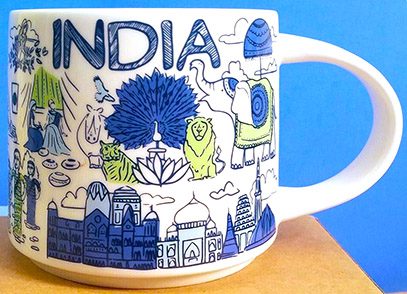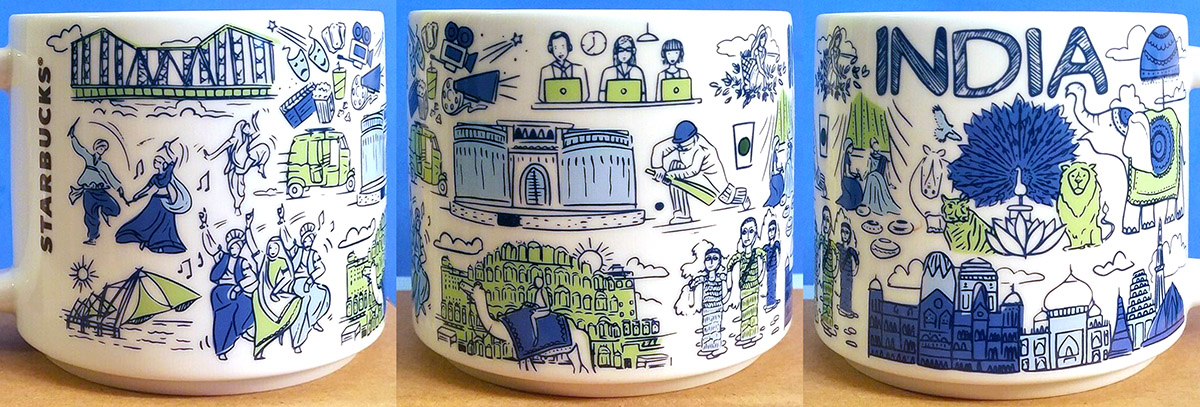
Been There – India
Starbucks Been There – India is one of the five mugs from BT series released for this country recently. As a reminder, there were only two YAHs from India: New Delhi and Mumbai.
This new mug is designed using the blue palette (my favorite) and showcases certain landmarks which India is known for: from architecture and animals to Bollywood and dancing.
Dance has always been a major part of the religious and cultural life in India. It dates back to ancient times and is believed to originate from dances and rituals of the Vedic period (circa 1500 – 500 BC). Here’s an interesting fact: according to Hindu mythology, Shiva (the third god in the Hindu triumvirate) is often called the Lord of Dance. He is believed to destroy the universe during the Tandav, the dance of death at the end of ages.
Generally speaking, dance in India can be classified as either classical or folk. Sangeet Natya Academy, the national academy for performing arts in India, recognizes eight classical dances: Bharatanatyam, Kathakali, Kathak, Kuchipudi, Odissi, Sattriya, Manipuri, and Mohiniyattam. In order to be considered a classic dance, it has to comply with guidelines explained in Natyashastra (a total of 6000 poetic verses describing performance arts), and its performance is supposed to evoke a rasa (emotion) among the audience. It is accomplished by telling a story almost exclusively through gestures and facial expressions.
As opposed to classic dance, folk dances are not regulated by the rules of Natyashastra and vary according to the local tradition of the ethnic or geographic region.
Contemporary dances represent a mix of classical, folk, and Western forms with dancing in movies being another big thing in India. I don’t think I’ve seen an Indian movie without a song or a dance. This has an amazing effect of exposing this piece of Indian art to a global audience.





















































































